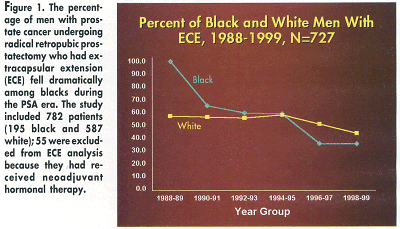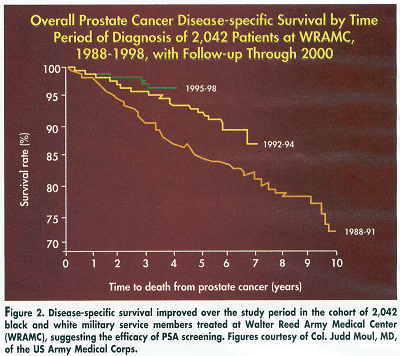Equal Access Erases Racial Disparity in Prostate Cancer Stage
WASHINGTON-Black men historically have some of the world’s worst rates of prostate cancer incidence and mortality, with prognostic features significantly worse than those of white Americans.
WASHINGTONBlack men historically have some of the world’s worst rates of prostate cancer incidence and mortality, with prognostic features significantly worse than those of white Americans.
But the longstanding staging disparity "evaporated" among men undergoing radical prostatectomy when members of both races had equal medical care, including equal access to PSA screening, reported Colonel Judd W. Moul, MD, of the US Army Medical Corps and director of the Department of Defense Center for Prostate Disease Research at the Uniformed Services University of the Health Sciences, Bethesda, Maryland.
Speaking at the 8th Biennial Symposium on Minorities, the Medically Underserved, and Cancer, Dr. Moul described a study of the impact of PSA screening among 2,042 black and white military service members diagnosed with prostate cancer.
Health care in the armed services, he emphasized, has completely open access and is equal for all members. The military population is relatively well educated and receives regular health information. This combination of circumstances "wiped out the pathological disparity" between the races, he said (see Figure 1).

Historically, he said, there has been a "huge difference" in positive margins between black and white prostate patients who undergo radical prostatectomy.
The study examined data on prostatectomy patients between 1988 and 1999. Over that period, the improvement in pretreatment PSA levels was "dramatic" for both races, with cancers being caught earlier in the disease course and among men of younger ages. The lowering of age at diagnosis, he indicated, is a "first sign" of a successful screening technique.
Overall survival, including disease-specific survival, also improved over the period (see Figure 2).

These results are "not definitive proof for screening efficacy," he said. The findings "could be explained by lead time, but we think it’s real." It is, at present, too early to make this determination based on the "gold standard" of disease-specific mortality determined by true population-based randomized studies. In his opinion, however, all men should consider having a baseline PSA at age 40.
Even more exciting, he said, is the proof that "aggressively incorporating" screening into an equal access system produces the "extremely positive health care message" that the racial disparity in prostate cancer outcomes appears to be "due not primarily to biology but largely to socioeconomics." Although ethnicity affects treatment choices in civilian life, among military members it does not, Dr. Moul added.
Christopher R. Porter, MD, professor of urology, Stony Brook Hospital Medical Center, Stony Brook, New York, concurred that these results are "very exciting." It is "great to see some movement" in the testing of PSA screening, he said, adding that in 10 years the data will be "much clearer."